Google’s search algorithm is incredibly complex, constantly evolving to deliver the most relevant and helpful results to users. While no one can perfectly predict its every move, understanding its core principles and implementing effective strategies can significantly boost your website’s visibility in search results.
How Long Does It Really Take to Rank on Google’s First Page?
Landing your business on the first page of Google search results isn’t something that typically happens quickly. It’s a process that can take 6+ months and requires an in-depth understanding of search engine algorithms.
Key Takeaways:
- SEO is a Long-Term Strategy: Don’t expect overnight results. Focus on building a strong foundation and consistently implementing best practices.
- Patience is Key: It can take months, or even years, to achieve significant and sustainable improvements in rankings.
- Continuous Monitoring and Improvement: Regularly track your progress, analyze your results, and make adjustments to your SEO strategy based on data and insights.
9 Actionable Steps to Improve Your Google Rankings
1. Improve Your On-Site SEO
On-page SEO is ONE of the FASTEST ways to improve your Google rankings.
This checklist provides a foundation for strong on-page SEO, which is crucial for improving your search rankings.
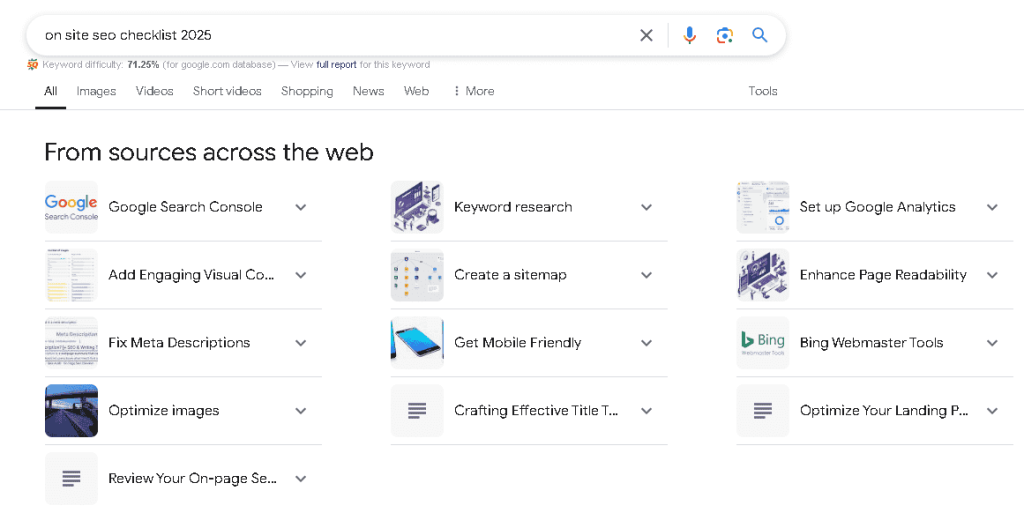
2.Add LSI Keywords to Your Page
LSI keywords can be a valuable part of your SEO strategy, they are not a magic bullet. Focus on creating high-quality, user-centric content that provides real value to your audience.
By incorporating LSI keywords into your content strategy, you can improve Google’s understanding of your page and enhance your chances of ranking higher in search results.
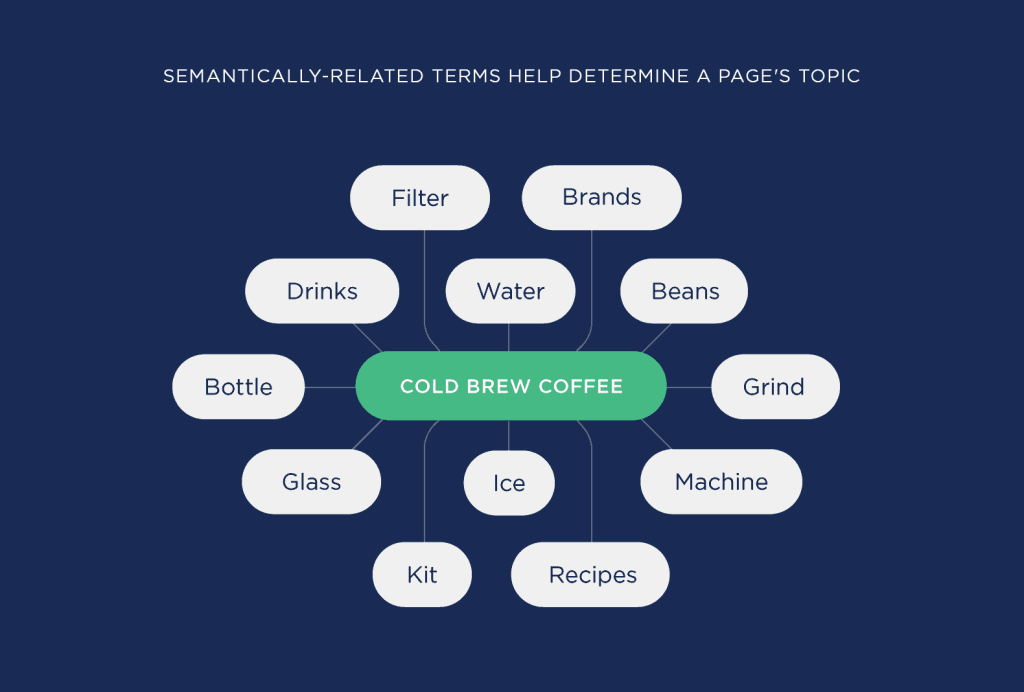
One of the quickest ways to uncover valuable LSI keywords is to leverage Google’s own search engine.
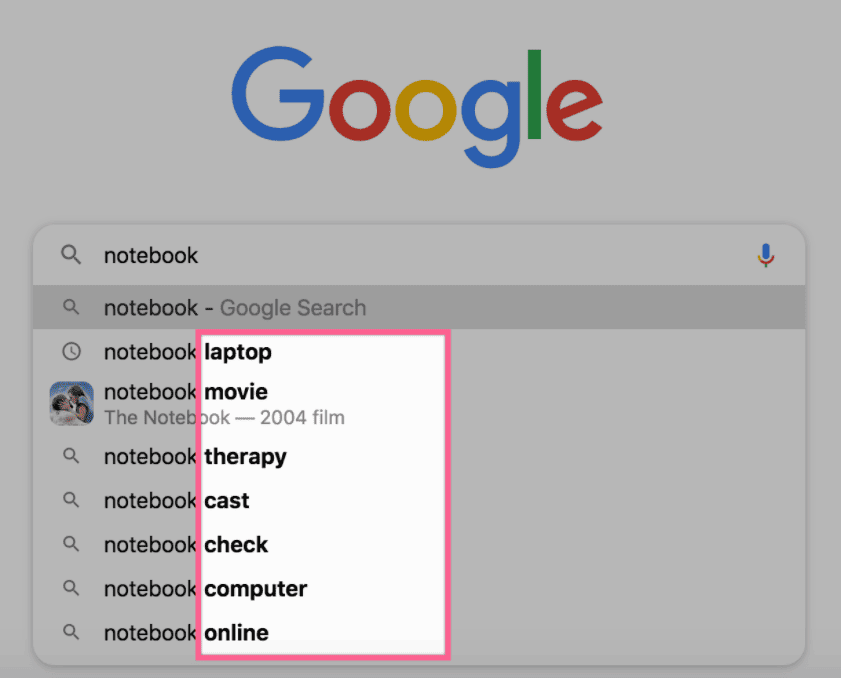
These suggestions reveal valuable LSI keywords like “Lptop,” “Movie,” “Cast,” and “Online,” which can be naturally incorporated into your content.
3. Monitor Your Technical SEO
Technical SEO, often overlooked, forms the bedrock upon which successful search engine optimization rests. It encompasses the intricate technical aspects of your website that directly influence how search engines crawl, index, and ultimately rank your pages.
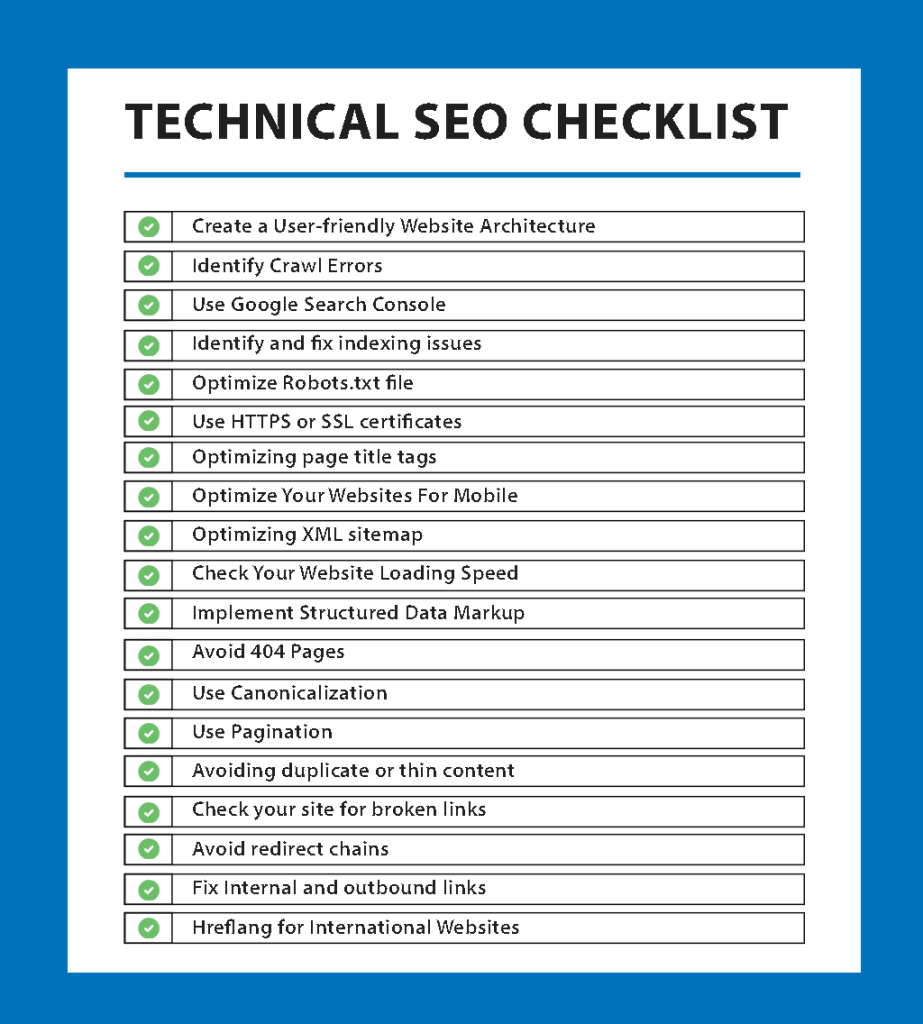
Tools for Technical SEO Monitoring:
- Google Search Console
A valuable resource for monitoring indexing status, crawl errors, and other technical SEO issues.

- Google Analytics
Provides insights into user behaviour, including bounce rates, page load times, and device usage.
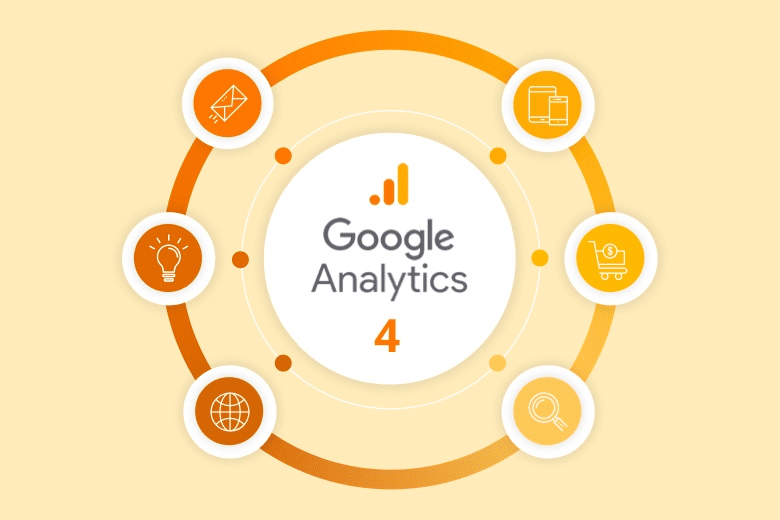
- PageSpeed Insights
Analyzes your website’s speed and provides actionable recommendations for improvement.

- GTmetrix
Another valuable tool for website speed testing and performance optimization.
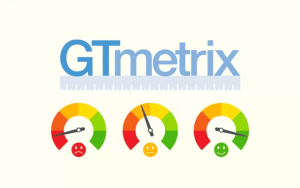
4. Match Your Content to Search Intent
By deeply understanding user search behaviour and aligning your content strategy accordingly, you can significantly improve your website’s visibility in search results, attract highly targeted traffic, and achieve your business goals.

Matching Content to User Intent: A Strategic Approach
Keyword Research Beyond Volume:
Go beyond simply identifying high-volume keywords. Deep dive into user intent behind each keyword.
Analyze the SERP:
Examine the top-ranking results for your target keyword, such as digital marketing strategy. What type of content is dominating the search results? How are these pages addressing user intent? Look at content format, depth, and relevance to ensure you provide an equally compelling, if not superior, answer.
Create Content That Answers User Questions:
Directly address the user’s needs and provide the information they are seeking.
Optimize On-Page Elements:
- Title Tags & Meta Descriptions: Accurately reflect user intent and entice clicks.
- Headings & Subheadings: Structure your content clearly and use headings to guide users.
- Image Alt Text: Use descriptive alt text that accurately describes the image and includes relevant keywords.
Leverage User Behavior:
- Track User Engagement: Monitor metrics like bounce rate, time on page, and click-through rate to understand how users are interacting with your content.
- Analyze User Behavior: Use tools like Google Analytics to identify user behavior patterns and refine your content strategy accordingly.
5. Reduce Your Bounce Rate
Bounce rate, the percentage of visitors who leave your website after viewing only one page, is a crucial metric for website success. A high bounce rate signals that your website isn’t effectively engaging visitors, potentially leading to lost traffic, lower search engine rankings, and missed opportunities for conversions.
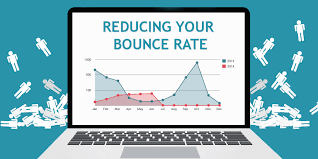
Strategies to Significantly Reduce Bounce Rate:
Prioritize Website Speed:
Optimize images, minimize HTTP requests, leverage browser caching, and consider a Content Delivery Network (CDN).
Enhance User Experience:
- Clean and Intuitive Design: Prioritize simplicity, clarity, and a user-centered approach. Use white space effectively and employ a logical and intuitive navigation structure.
- Mobile-First Approach: Ensure your website is fully responsive and provides an optimal experience across all devices.
- Accessibility Considerations: Adhere to accessibility guidelines (WCAG) to ensure your website is usable by everyone.

Create High-Quality, Relevant Content:
- Focus on User Intent: Thoroughly research user search queries and tailor your content to address their specific needs and questions.
- Compelling Headlines and Introductions: Capture attention and encourage further exploration.
- High-Quality Visuals: Use relevant images, videos, and infographics to enhance engagement.
- Clear and Concise Writing: Break up text with headings, subheadings, bullet points, and short paragraphs.

Implement a Robust Internal Linking Strategy:
- Guide User Flow: Strategically link to relevant internal pages to encourage further exploration and keep users engaged.
- Improve Website Structure: Internal links help search engines understand the hierarchy and structure of your website.
6. Find Even More Keywords to Target
By continuously exploring and expanding your keyword list, you’ll ensure your content stays relevant, attracts the right audience, and helps you achieve your SEO goals.
 Keyword research is like panning for gold. You need patience, persistence, and the right tools to uncover those valuable nuggets that will make your SEO efforts shine.
Keyword research is like panning for gold. You need patience, persistence, and the right tools to uncover those valuable nuggets that will make your SEO efforts shine.

7. Enhance Local SEO For Businesses
By optimizing your online presence for local searches, you can significantly increase your visibility, attract more foot traffic, and ultimately boost your bottom line, especially if you are offering local SEO services or running a small business.
Key Pillars of a Strong Local SEO Strategy:
Google My Business (GMB) Optimization:
- Claim and Verify Your Profile: Ensure your business information is accurate and up-to-date.
- Complete Your Profile: Fill out all relevant sections, including business description, services offered, photos, videos, and service areas.
- Encourage Customer Reviews: Regularly solicit and respond to customer reviews. Positive reviews help build trust with potential customers and are a critical ranking factor for local SEO services. They also serve as social proof, encouraging new customers to visit your business.
- Post Regularly: Share updates, special offers, and behind-the-scenes content to engage with your audience.

By targeting local SEO for small businesses, you can position your company for success in the competitive local marketplace.
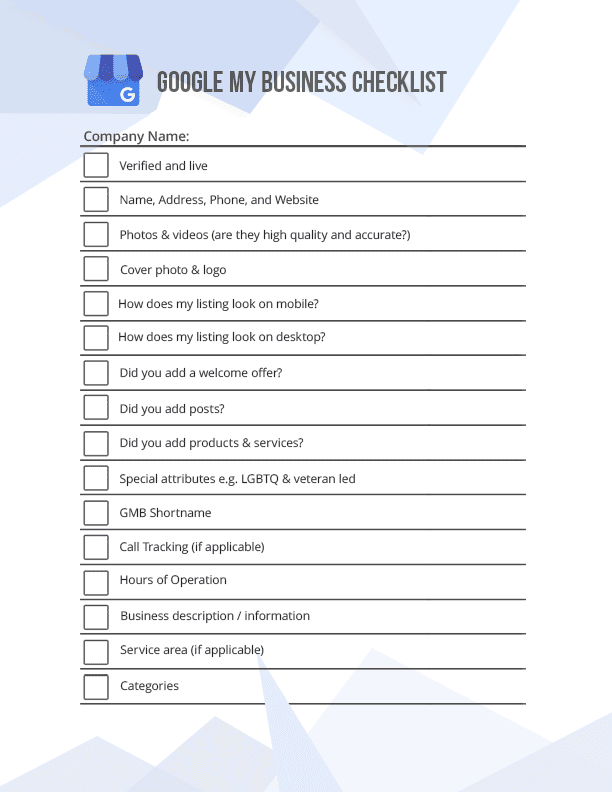
On-Page Optimization:
- Location Pages: Create dedicated pages for each of your physical locations (if applicable).
- Local Keywords: Incorporate location-based keywords (e.g., “[City] [Business Name],” “[City] [Service]”) throughout your website content.
- Schema Markup: Implement schema markup to help search engines understand your business information (e.g., address, phone number, opening hours).
Citation Building:
- Consistent NAP (Name, Address, Phone Number): Ensure your business information is consistent across all online platforms (e.g., directories, social media, citations).
- Local Directories: Claim and optimize your business listings on popular online directories such as Yelp, Bing Places, and Yellow Pages.
 Local Link Building:
Local Link Building:
- Earn Backlinks from Local Websites: Seek backlinks from local news sites, community websites, and other reputable local businesses.
- Engage in Local Partnerships: Collaborate with other local businesses for cross-promotional opportunities.
Content Marketing:
- Create Local Content: Publish blog posts, articles, and other content that is relevant to your local community.
- Engage on Social Media: Social media engagement is more than just posting and hoping for the best. It’s about building genuine connections with your audience, fostering meaningful conversations, and creating a vibrant online community
Monitor and Analyze:
- Track Your Performance: Monitor your Google My Business Insights and website analytics to track your progress and identify areas for improvement.
- Respond to Reviews: Respond promptly to both positive and negative reviews to demonstrate customer service and address any concerns.
8: Build Backlinks to Your Site
Key Principles of Successful Backlink Building:
- Focus on Quality Over Quantity: A few high-quality backlinks from reputable websites are far more valuable than numerous low-quality links.
- Natural Link Building: Focus on earning links naturally through creating high-quality content that other websites genuinely want to link to.
- Relevance is Paramount: Backlinks from websites that are relevant to your niche are more valuable than links from unrelated sites.
- Diversify Your Backlink Profile: Aim for a diverse backlink profile, with links from a variety of sources, including blogs, news sites, forums, and directories.

Top Tools for Finding High-Quality Backlinks
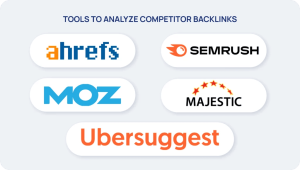
9: Track and Monitor Your Results
Tracking and monitoring your website results is crucial for understanding the effectiveness of your efforts and identifying areas for improvement. By consistently analyzing your data and making data-driven decisions, you can maximize your return on investment (ROI) and achieve long-term SEO success in digital marketing.
Conclusion:
Improving your Google rankings is an ongoing process that requires dedication, patience, and a strategic approach. By mastering key components like on-site SEO, technical SEO, content marketing, and local SEO services, you can position your website for sustained success in search engine results. Implementing actionable steps such as enhancing user experience, creating high-quality content, and building relevant backlinks will strengthen your SEO strategy and help you achieve higher visibility.
Remember, SEO is a long-term investment that pays off with consistent effort and continual monitoring. Whether you are optimizing for local search, refining your content, or expanding your keyword targeting, the key is to stay aligned with user intent and always aim to provide valuable, relevant information.
If you’re ready to take your digital marketing to the next level and improve your Google rankings, Mount WebTechnologies is here to help. Contact us today to get personalized SEO strategies that will help your business grow, attract more customers, and succeed in the competitive digital landscape. Contact Us to start your SEO journey today!


